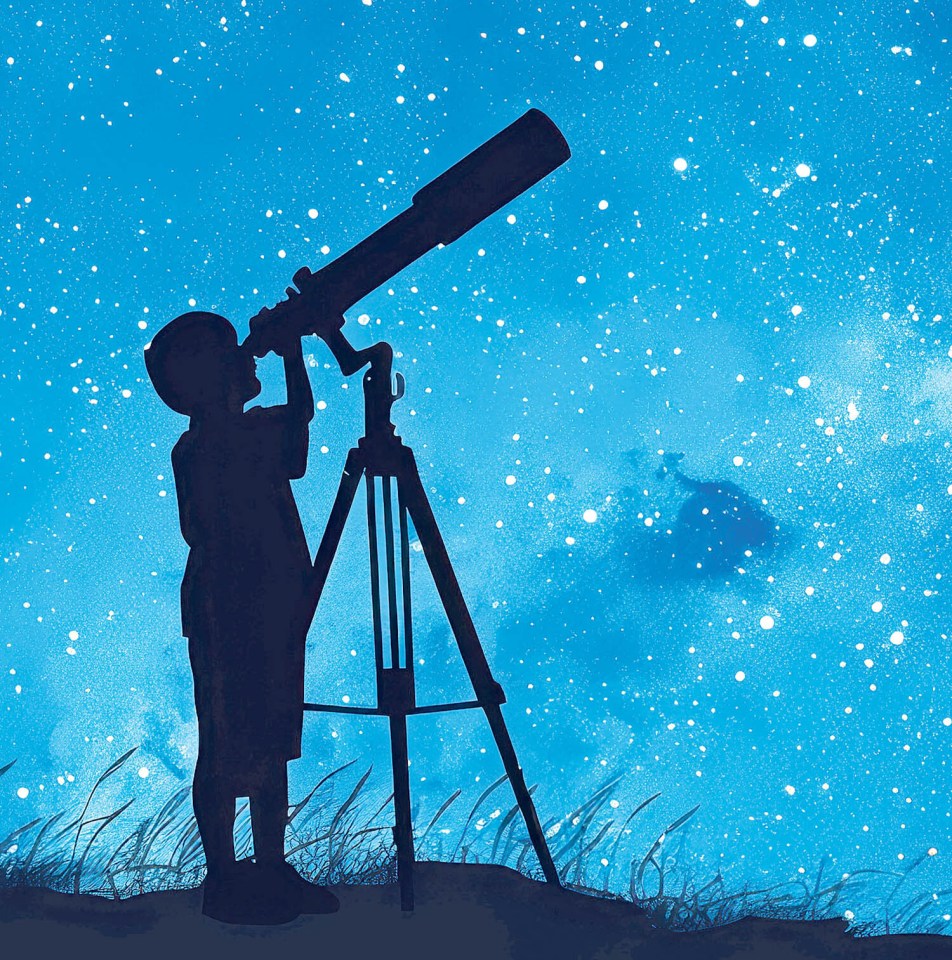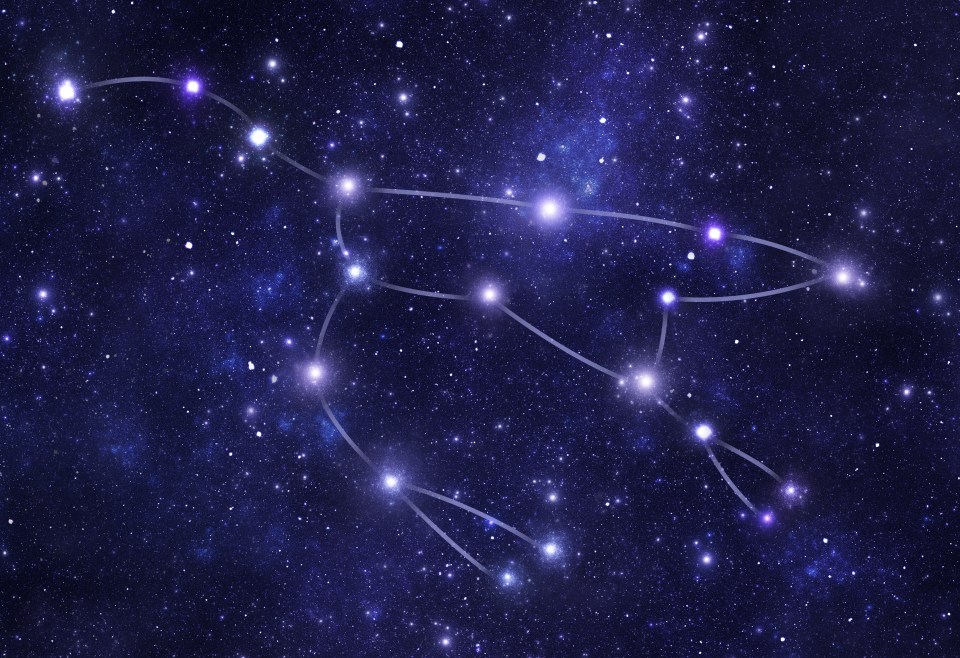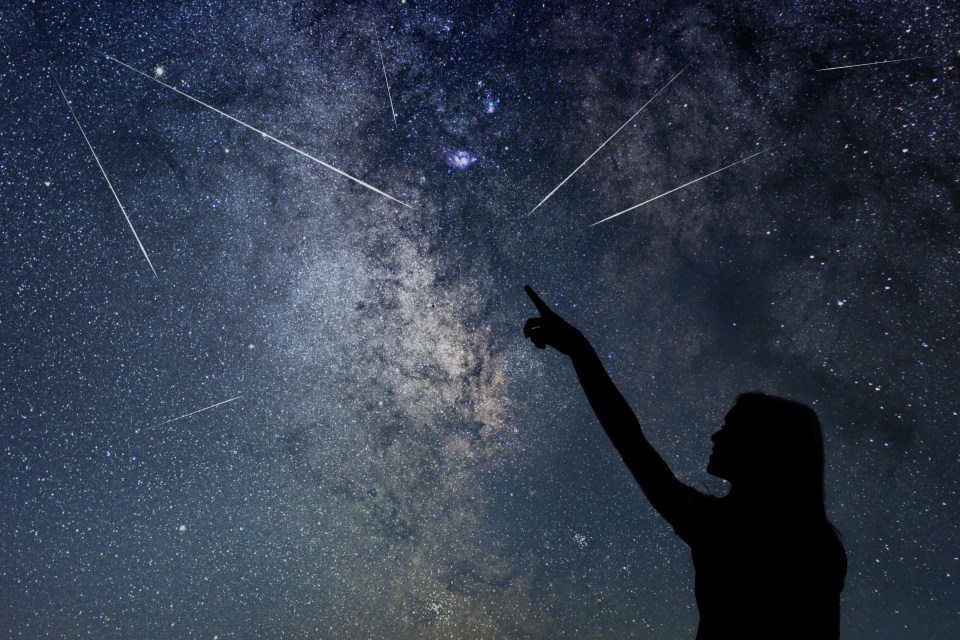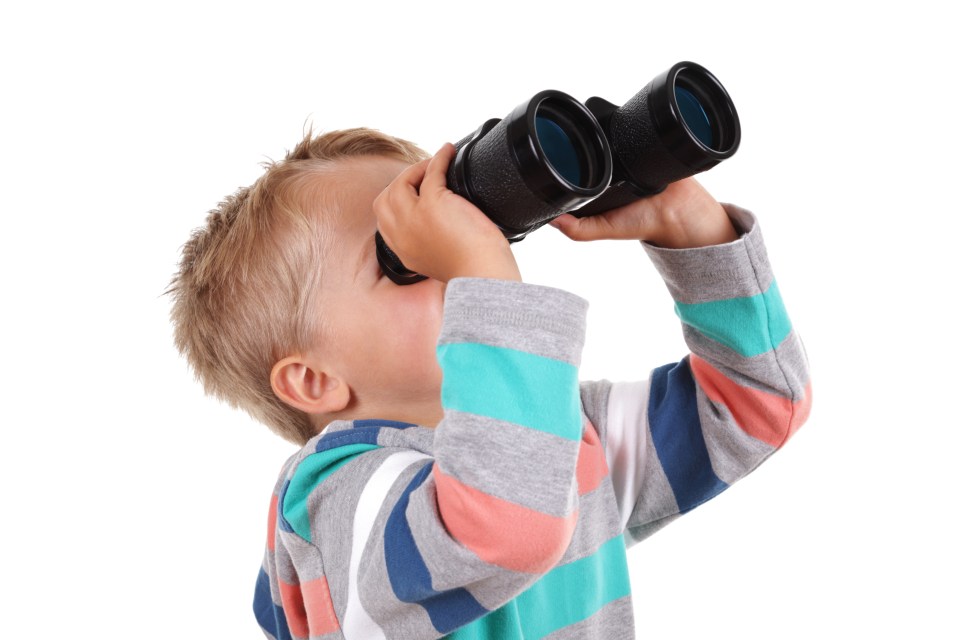IF summer holiday boredom is setting in, the answer could be written in the stars.
Astronomy is growing in popularity across the UK, with retailer Argos reporting sales of telescopes and binoculars up 1,380 per cent year-on-year.
Fans are also turning to “Spacetok” with the astronomy hashtag used more than 540,000 times on social media.
With planet-spotting’s popularity going into orbit, the good news is you don’t need to spend lots of money on equipment to get started.
Anyone can have a go on a budget!
Outreach astronomer Neill Sanders, founder of gostargazing.co.uk, has advice for beginners on navigating the night sky.
WHERE TO GO: Looking for constellations is not complicated.
Whether you live in the city, suburbs or deep in the countryside, you can look up from anywhere.
Try in a garden, nearby park or through a bedroom window.
Remember to turn off any lights first and give your eyes around 15 minutes to adjust.
The darker the sky, the more stars you are likely to see.
So if there is a lot of light pollution in your area it can be well worth travelling a few miles to see more.
There are stargazing sites all over the UK and an outing to a designated Dark Sky area is great fun.
Many are free and have toilets and parking for your adventure.
NIGHT SKIES: A quick online search will offer the lunar calendar with precise moon phases planned out.
Try to time your stargazing session so it takes place in the days before, during or just after a new moon.
At this time, you should be able to see thousands of stars with only your eyes.
If you do have use of a telescope, this is also the best time to see galaxies and star clusters.
You might even get lucky and see the Milky Way arching across the sky, depending on the month of the year and time of night.
Natural moonlight washes out the light from most stars so during a full moon is the worst time to stargaze, as fewer are visible.
PRECISE PEEPERS: There’s no need for flashy kit.
Depending on the amount of light pollution, you could see up to 3,000 stars from a dark-sky location with no equipment at all.
But a set of budget binoculars will let you see far more.
A basic pair, magnifying 10×50, is ideal for beginners and children, and are widely available from around £30 in many high street stores.
If you decide to invest further, specialist supplier firstlightoptics.co.uk has great advice and affordable beginner telescopes.
To stabilise your eyes, fix a pair of binoculars to a tripod or rest them on a garden fence or wall.
PLAN IT: Dress appropriately — even in a heatwave it can get cold at night.
A chair to perch on is useful too, and in a pitch-black area, it is advisable to take along a rechargeable torch.
Try to use a red beam, as white light can affect how well your eyes focus once looking upwards.
Red bike lights make great stargazing torches, as they don’t affect “dark-adjusted” eyes.
Leave your phone in your pocket, too, or put a red filter on it.
If you do need to use white light for any reason, be mindful of other stargazers.
And always stay safe. Tell someone where you are going and don’t forget to take drinks and snacks.
ASTRONOMERS APPS: Your smartphone or tablet is a super source of star charts for spotting constellations and learning your way around the night sky.
Check out resources such as Star Walk, Star Tracker and Sky Safari in your app store.
Some even present a real-time view of the night sky using GPS, a compass and built-in inclinometer to give details about the object your phone is pointed at.
Just remember to look away from your phone and up to the stars. Or opt for a traditional printed star-chart instead. Be patient, as your eyes settle, you will start to see more stars.
JOIN A GROUP: Getting together with other people is a great way to start off, and helps make it more affordable.
Most of the local astronomy groups and observatories in the UK hold events or observing sessions, which you can attend for free or for a few pounds.
TIPS FOR WATCHING METEOR SHOWERS
- Avoid light pollution – Stargazers should head to a location well away the city lights, the glow of a town, and even that of street lamps
- Put the phone away – You should give your eyes at least 15 minutes to adjust to the dark so you can see the fainter meteors
- Unobstructed view – Make sure that your star gazing spot has an unobstructed view of the horizon and above, away from treelines or cityscapes is best
Stargazing societies welcome everyone — including complete beginners.
As well as being a way to learn more, it can also give you access to some hi-tech kit that would be too expensive to buy yourself.
Some astronomy groups will even lend telescopes to members.
SHAPE SHIFTERS: Swot up on famous constellations and use your star chart or app to find them.
Officially, these are the 88 recognised patterns that help astronomers divide the sky into sections, but you will also see smaller patterned shapes known as asterisms.
Good ones to seek out are the famous Plough, the lion- shaped Leo and Ursa Major, which resembles a bear.
Remember, not all constellations can be seen year-round.
Shooting stars are the perfect starting point and they are happening now until August 23
You will not find Orion, the skyward hunter, in the summertime in the UK as he is only visible in winter.
With practice, you will soon start to spot planets such as Jupiter, Venus and Saturn, as stars will twinkle but planets won’t.
SHOOTING STARS: For some added excitement, note dates of meteor showers in UK skies.
These atmospheric firework displays take place at the same time annually, and are best seen with the naked eye and in groups.
They are perfect starting points for beginners, young stargazers and families.
You may see small streaks of shooting space dust or more dramatic colourful bursts.
The names of meteor showers are based on the constellation where they appear to radiate from.
Clubs and societies often arrange meteor shower meets or even Stay And Gaze events.
Now, until August 23 a shower known as Perseids is taking place.
Perfect timing for the holidays!
What’s the difference between an asteroid, meteor and comet?
Here’s what you need to know, according to Nasa…
- Asteroid: An asteroid is a small rocky body that orbits the Sun. Most are found in the asteroid belt (between Mars and Jupiter) but they can be found anywhere (including in a path that can impact Earth)
- Meteoroid: When two asteroids hit each other, the small chunks that break off are called meteoroids
- Meteor: If a meteoroid enters the Earth’s atmosphere, it begins to vapourise and then becomes a meteor. On Earth, it’ll look like a streak of light in the sky, because the rock is burning up
- Meteorite: If a meteoroid doesn’t vapourise completely and survives the trip through Earth’s atmosphere, it can land on the Earth. At that point, it becomes a meteorite
- Comet: Like asteroids, a comet orbits the Sun. However rather than being made mostly of rock, a comet contains lots of ice and gas, which can result in amazing tails forming behind them (thanks to the ice and dust vaporizing)

















